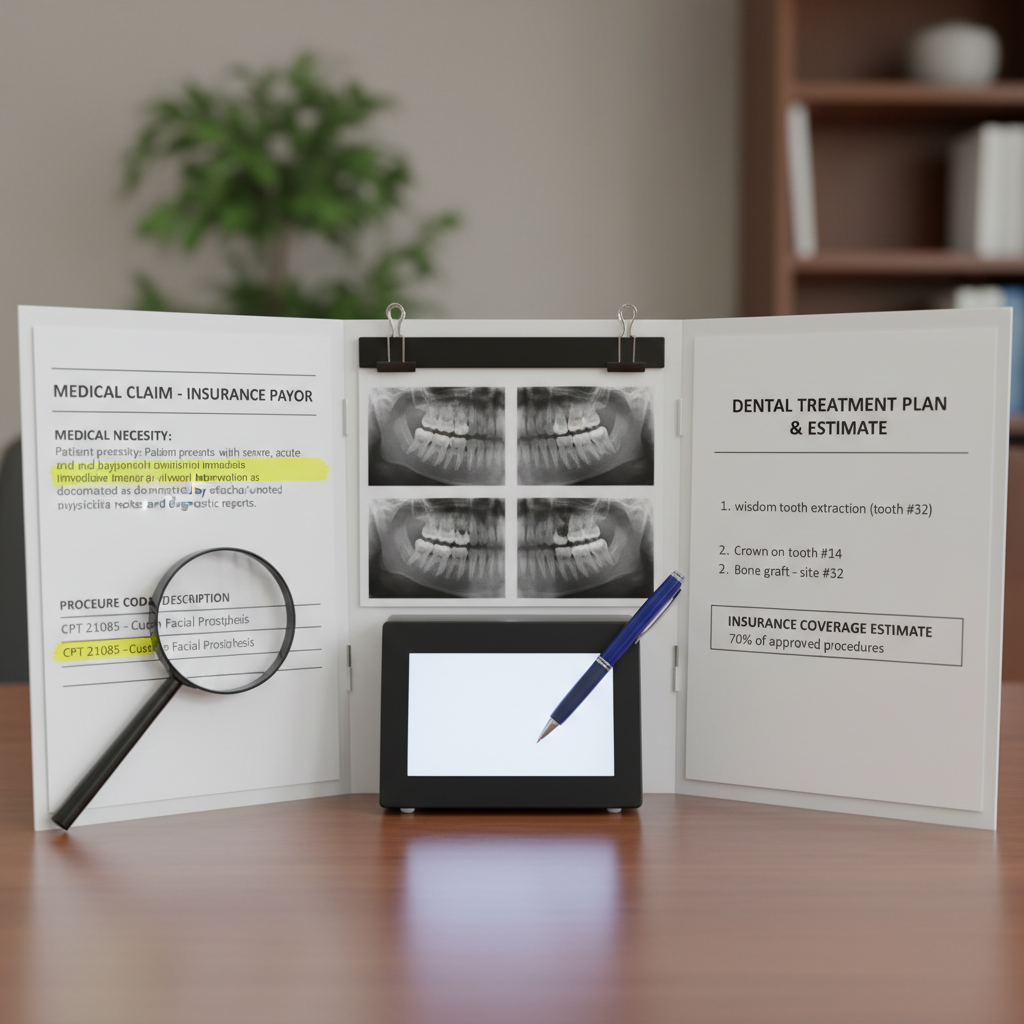
Ever wondered why your dental insurance shrivels up the moment you mention veneers or clear aligners? You’re not alone. In 2025, the average smile makeover easily tops $15,000, and insurance companies still draw a hard line between what’s ‘cosmetic’ and what’s ‘medically necessary.’ But here’s the truth: with the right documentation, policy language, and a strategic conversation with your dentist, you can unlock thousands in hidden insurance value—even for procedures that look purely cosmetic.

Understanding the Insurance Game: Cosmetic vs. Medically Necessary
Insurance plans in 2025 have gotten more flexible, but they still rely on strict definitions. Cosmetic procedures—like teeth whitening and most veneers—are almost always excluded. But restorative procedures (crowns, implants, clear aligners for bite correction) are often included if you can show a health or functional reason.
- Delta Dental Premier PPO ($47/mo): Covers 50% of major services (crowns, implants) after 12 months, annual max $2000. Veneers excluded unless medically required.
- Cigna Dental 1500 ($35/mo): 50% coverage for implants, crowns, orthodontics after deductible/waiting period. Lifetime ortho max: $1500. No coverage for elective veneers.
- Anthem Essential Choice PPO ($42/mo): Includes 50% coverage for major restorative; covers aligners/braces for bite correction (malocclusion) up to age 19, with lifetime max $1500.
What’s new for 2025? Premium PPO plans and several group policies are raising annual maximums to $2,500+ and expanding coverage for dental implants and orthodontics—if the procedures are justified as medically necessary.[1][6][9]

How to Get Cosmetic Procedures Covered: Step-by-Step
1. Learn the Policy Language
Insurers use key phrases like “necessary to restore function,” “medically indicated,” or “following trauma.” Here are sample excerpts from 2025 policies:
- “Coverage for crowns provided when the tooth is broken, decayed, or structurally compromised.”
- “Veneers excluded unless other restorative options are clinically futile due to fracture, wear, or malformation.”
- “Dental implant coverage requires proof of tooth loss due to accident, disease, or congenital condition.”
- “Orthodontic benefits apply to the correction of malocclusion impacting mastication or speech.”
2. Position the Treatment as Restorative
Work with your dentist to document function-related problems. Examples:

- Veneers for a front tooth broken in a biking accident: Dentist documents trauma, alternative treatments (bonding, crown) are insufficient. Insurance often pays a portion.
- Crowns for worn teeth due to bruxism (teeth grinding): Show that wear is causing sensitivity, bite changes, or risk of fracture.
- Dental implants for missing molars: Dentist notes difficulty chewing, jawbone loss. Attach X-rays and a narrative.
- Clear aligners for overbite/misaligned bite: Demonstrate jaw pain, speech issues, or risk of tooth wear.
3. Documentation Checklist (2025)
- Detailed clinical notes describing pain, loss of function, or medical necessity
- Pre-op photos, X-rays, and dental models
- Letter of medical necessity from your dentist, referencing plan language
- Charting failed previous restorations or health complications
- Codes for restorative treatment (not cosmetic codes)
4. Scripts for Talking to Your Insurer
- “My dentist determined that a crown/veneer is required due to structural damage from trauma, not for appearance. Can you confirm coverage under the major restorative section?”
- “Clear aligners are being prescribed to correct a functional bite problem—malocclusion—that’s causing jaw pain. Does my plan’s orthodontic rider apply?”
- “This implant is to restore chewing ability after tooth loss from disease. Here’s the documented diagnosis.”

Real-World Examples (2025): Readers Getting Insurance to Pay
- Kara, 33, Los Angeles: Needed an implant for a front tooth after a car accident. Insurer initially denied coverage as cosmetic; after submitting accident report and dentist’s letter, got 50% of the $3,800 cost covered (Delta Dental Premier).
- Miguel, 41, Austin: Wore down his front teeth from stress grinding; dentist documented functional damage. Cigna Dental 1500 covered 60% of four crowns ($4,200 total) after waiting period, since bonding failed previously.
- Rebecca, 28, NYC: Used clear aligners (Invisalign) to fix severe overbite causing speech issues. Anthem Essential Choice PPO paid up to $1,400 of the $5,200 cost under orthodontic rider, after dentist submitted speech evaluation and pre-op photos.
Expert Tips to Maximize Your 2025 Dental Insurance Payout
- Get pre-authorization before starting any major work—most plans require this for crowns, implants, or ortho.
- Use the right billing codes: Insurers flag ‘cosmetic’ codes, but ‘restorative’ codes linked to function are processed faster.
- Lean on annual maximums: If your procedure is over $2,000, split it over two benefit years if possible.
- Stack coverage: Pair primary dental insurance with a supplemental plan (like Ameritas PrimeStar Access, $27/mo), or use HSA/FSA funds for extra savings.
- Don’t wait: Most unused dental benefits expire Dec 31, 2025—if you delay, you’ll lose out.[7][10]

Final Thoughts: Play the System, Don’t Let it Play You
Dental insurance rarely pays for procedures labeled as ‘cosmetic’—but by reframing your treatment as a functional necessity and using airtight documentation, you can unlock thousands in reimbursements for work that also delivers a celebrity-caliber smile. Plans like Delta Dental Premier PPO, Cigna Dental 1500, and Anthem Essential Choice PPO offer the best shot at coverage for major restorative treatments with cosmetic outcomes, but the process is never automatic. Be proactive, persistent, and strategic to get the max out of your 2025 benefits.

Ready to unlock the benefits you’re already paying for? Call your dentist, review your plan, and start your claim before the year ends—because the best smile upgrades don’t wait for open enrollment.


